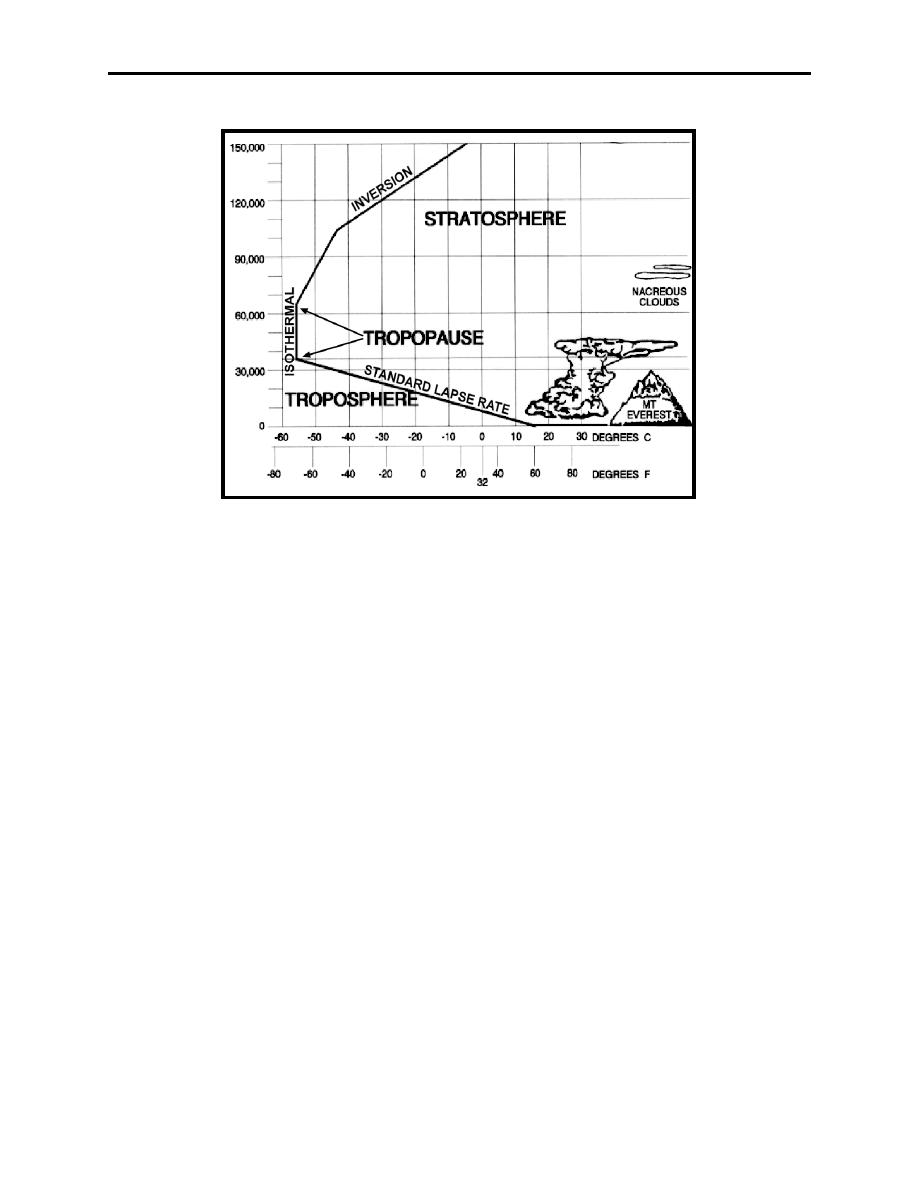 |
|||
|
|
|||
|
Page Title:
Figure 1-2 Two Lowest Atmospheric Layers and Lapse Rates |
|
||
| ||||||||||
|
|  AVIATION WEATHER
CHAPTER ONE
Figure 1-2 Two Lowest Atmospheric Layers and Lapse Rates
The average height of the troposphere over the United States is 36,000 feet mean sea level (MSL),
but pressure systems and seasonal differences cause a variance in the height. Due to heating, the
troposphere extends to a greater height in summer than in winter. The atmosphere becomes less
dense with altitude, and roughly 50% of it, by weight, lies below 18,000 feet and 90% within
53,000 feet. Within the troposphere, the temperature normally decreases with increasing altitude.
Large amounts of moisture and condensation nuclei are found in the troposphere because of its
closeness to the Earth's surface, and nearly all weather occurs here. Winds are generally light
near the Earth's surface and increase with altitude. Wind speeds over 200 knots may occur near
the top of the troposphere. An abrupt change in the rate of temperature decrease with increasing
altitude marks the boundary, called the tropopause.
The tropopause is a transition zone between the troposphere and the stratosphere. The
temperature in this layer is isothermal with altitude. As you can see from Figure 1-2 above, there
is an abrupt change in the rate of temperature decrease with increasing altitude. The tropopause is
important to aviators for several reasons. The strongest winds, those of the jet stream, occur just
below the tropopause. Moderate to severe turbulence is sometimes associated with the wind shear
caused by the jet stream. Contrails frequently form and persist near the tropopause since it is
normally the coldest area within the lower atmosphere. While clouds and weather are generally
confined to the troposphere, severe thunderstorm tops may penetrate the tropopause into the
stratosphere. You can sometimes identify the tropopause while in-flight by the following
characteristics: the average height of the tropopause over the US is 36,000 feet MSL, anvil tops
of thunderstorms will spread out at the base of the tropopause, and a haze layer with a definite top
frequently exists at the tropopause.
General Structure of the Atmosphere, and Atmospheric Temperature and Pressure 1-3
|
|
Privacy Statement - Press Release - Copyright Information. - Contact Us |